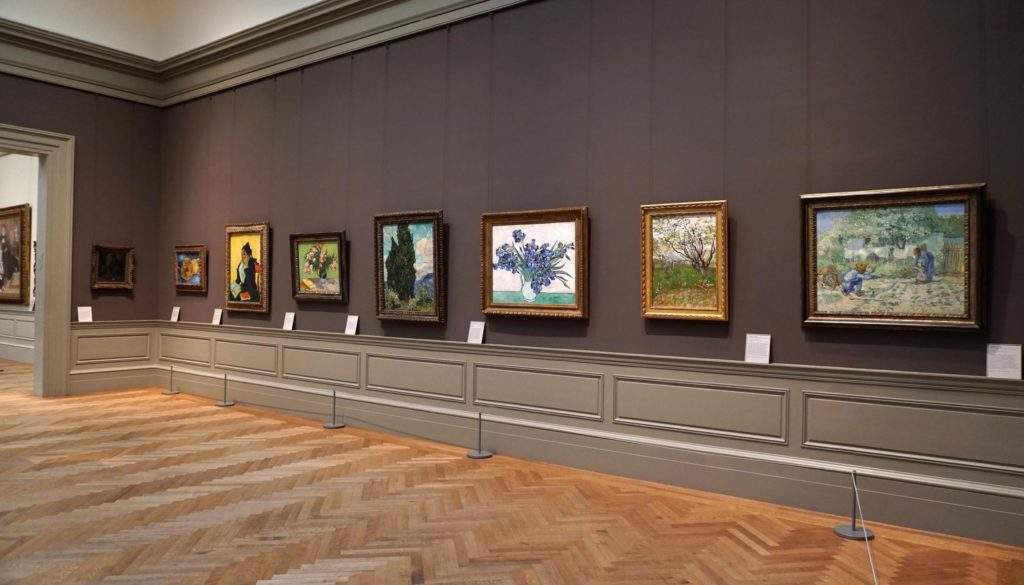Disturbing from the US: there is a green light to sell works for museums in financial trouble
What any art lover or museum director would never want to read is now a reality: the green light has been given in the U.S. for the sale of artworks for museums facing financial difficulties due to the crisis caused by the Covid-19 coronavirus pandemic. The decision came from the Association of Art Museum Directors (AAMD), the powerful body active since 1916 that brings together museum directors from the U.S., Mexico, and Canada and dictates the guidelines when it comes to museum management (it currently has 227 members, and the directors of major museums are practically all there: the Metropolitan, the Guggenheim, the Smithsonian American Art Museum, the Art Institute of Chicago, the Getty in Los Angeles, the Kimbell in Fort Worth, the Cleveland Museum of Art, the Detroit Institute of Arts, and many others).
The AAMD board met in mid-April to address the crisis, and drafted a number of resolutions to figure out what suggestions to provide to museums struggling with reduced resources. “These resolutions,” reads a memo, “were made in recognition of the extensive negative effects of the current crisis on the operations and budgets of many museums, as well as the uncertainty about the timeline it will take for museums to return to normal.” The AAMD has decided that it will “avoid censuring or sanctioning any museum (or censuring, suspending or disbarring any museum director)” that relies on donations or capital to meet routine operations for which there are no resources available. In addition, no action will be taken against museums that decide to divest artworks to pay the out-of-pocket expenses of collections management.
The resolution, the AAMD points out, does not change the association’s guidelines, but rather aims to establish a moratorium valid until April 10, 2022. “This is an unprecedented crisis,” said Brent Benjamin, president of the AAMD, “with global implications and a time sequence that changes day by day. There is no deadline that tells us when the pandemic will end, when the economy can recover, when we will return to normal. Art museums, however, plan their exhibitions and activities months or years in advance, and they work by anticipating the costs and fundraising they need for each initiative. Since it is impossible to plan for the future with certainty, and since income has stopped and the future of donations is unknown, it is important for AAMD to take an extra step to secure extra financial resources for museums.”
Regarding the disposal of works, the AAMD has made it known that it will therefore be possible for museums to sell them to meet current expenses. There will, however, be rules: “In order to use proceeds from the disposal of works,” the AAMD points out, "museums will have to have a policy approved by their board of directors, in which it is established what type of expenditure is considered for the purpose of direct management of collections, and the same policy will have to be publicly accessible (e.g., posted on the website.“ This concession, the AAMD further explains, ”is not intended to incentivize the disposal or sale of artworks, but only to provide additional flexibility on the use of proceeds from artworks that might be sold. A solid principle of the AAMD is that proceeds from the sale of artworks should not be used for current museum expenses, and this principle must stand." Obviously, it is understood that any director who wants to use this means must do so according to the laws of his or her jurisdiction, and where possible must consult with donors or asset owners of museum trusts. Museums also are to keep records detailing all transactions.
It should be noted that, for U.S. museums, the sale of works of art is not new: for example, it is permissible to divest works from one’s own collection if the purpose is to accumulate resources to purchase more important works, as happened in 2011 at the Museum of Fine Arts in Boston, which divested eight works (including paintings by Monet, Gauguin, Sisley, Pissarro, and Renoir) to purchase one by Caillebotte, the 1884Man at the Bath that is now part of the museum’s collection. Nor have there been any shortage of museums that have sold works to strengthen their financial capacity, as happened in 2008 to the National Academy Museum in New York, which disposed of two works, one by Frederic Edwin Church and one by Sanford Robinson Gifford, to accumulate resources, but when this happened the (few) museums that did so were pelted with criticism and received harsh reprimands from the AAMD (as in the case of the National Academy Museum, which was bitterly reprimanded then). What is new now is that this taboo has fallen and a green light has been given, albeit temporarily, for sales in order to equip themselves with additional resources. But it is still a turning point that gives an idea of the severity of the crisis, if it crosses a line hitherto considered inviolable.
Pictured: the interior of the Metropolitan Museum in New York.
 |
| Disturbing from the US: there is a green light to sell works for museums in financial trouble |
Warning: the translation into English of the original Italian article was created using automatic tools. We undertake to review all articles, but we do not guarantee the total absence of inaccuracies in the translation due to the program. You can find the original by clicking on the ITA button. If you find any mistake,please contact us.



























